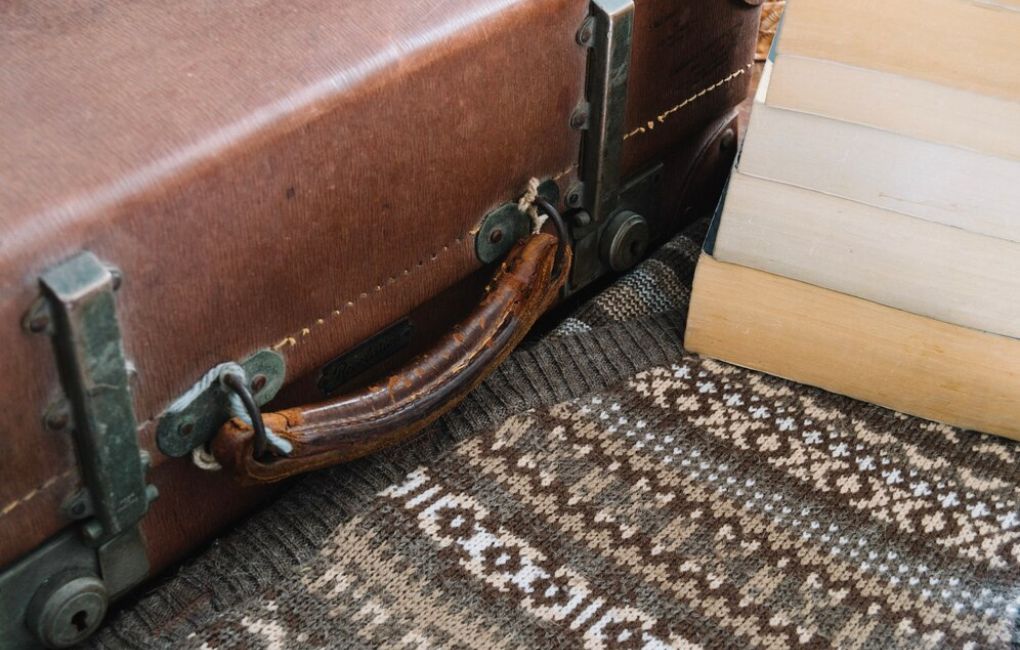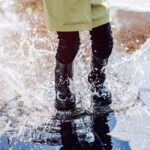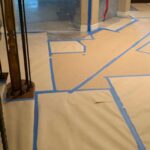Water can indeed ruin leather if not properly managed. While high-quality leather items possess some natural water resistance, prolonged exposure to moisture can lead to damage such as discoloration, stiffness, and even mold growth. To prevent water stains and maintain the integrity of leather goods, it’s crucial to promptly dry them if they get wet.
How to Restore Water Damaged Leather Items effectively, from blotting up excess moisture to reviving the leather’s natural oils. So grab a clean cloth, some leather conditioner, and let’s get started.
Types of Leather
There are four main types of leather:
Top-grain
This leather is known as “full-grain” leather, prized for its durability and natural beauty. By utilizing the outermost layer of the hide and meticulously refining it through sanding and buffing, any imperfections are removed, resulting in a luxurious and high-quality material.
Full-grain
This type of leather is termed “top-grain” leather, esteemed for its durability and natural texture. Unlike full-grain leather, it hasn’t undergone sanding or buffing processes, preserving the original grain pattern. While still of high quality, it may have minor imperfections but offers a more authentic and rugged appearance compared to full-grain leather.
Split-grain
This type of leather is typically referred to as “split-grain” or “genuine” leather. It’s crafted from the inner layers of the hide, making it less durable and prone to wear compared to top or full-grain leather. While it may be more affordable, it lacks the strength and longevity of higher-quality leathers due to its composition from lesser-quality portions of the hide.
Bonded
This type of leather is commonly known as “bonded leather” or “reconstituted leather.” It’s manufactured by combining leftover leather scraps with adhesive, forming a composite material. While it may resemble genuine leather in appearance, it lacks the durability and longevity of higher
Does Water Ruin Leather?
Water can indeed ruin leather if not properly managed. While high-quality leather items possess some natural water resistance, prolonged exposure to moisture can lead to damage such as discoloration, stiffness, and even mold growth. Leather absorbs water, causing it to swell and lose its original shape.
Furthermore, water can strip leather of its natural oils, leading to dryness and cracking over time. To prevent water stains and maintain the integrity of leather goods, it’s crucial to promptly dry them if they get wet and apply appropriate leather conditioners to restore moisture and protection.
Signs of Water Damaged Leather
Stiffening
When leather gets wet, the moisture can cause the fibers to swell and stiffen as it dries, resulting in a loss of flexibility. This stiffness can make the leather feel rigid and uncomfortable, affecting its usability and comfort. Moreover, prolonged exposure to water without proper drying and conditioning can exacerbate this issue, potentially leading to long-term damage such as cracking or warping.
Discoloration
When water penetrates leather, it can temporarily darken or alter its color, a phenomenon more noticeable in lighter-colored leathers due to their higher susceptibility to stains. As the leather dries, some of this discoloration may fade, but there could still be residual variation in color. This variation might persist even after drying, particularly if the water has left behind any mineral deposits or residues.
Cracking and Warping
Excessive moisture can indeed compromise the structural integrity of leather by weakening its fibers and causing stretching. As the leather dries, it may fail to regain its original shape, leading to warping or cracking. Proper conditioning after drying is essential to restore moisture balance and prevent further damage, ensuring the leather maintains its integrity and durability over time.
Mold and Mildew
Moist environments create favorable conditions for the growth of mold and mildew on leather surfaces. These fungi can thrive on the organic materials present in leather and cause permanent damage by breaking down its fibers. Additionally, mold and mildew can generate a musty odor, further compromising the appeal and usability of the leather item. Regular cleaning and proper storage in a dry environment are essential to prevent mold and mildew growth and preserve the integrity of leather goods.
Restoring Water Damaged Leather Items
Act Quickly
Addressing water damage promptly is crucial for salvaging leather items. Swift action allows for thorough drying, minimizing the extent of moisture absorption and reducing the risk of structural damage like warping or cracking. Additionally, quick intervention can help prevent the growth of mold and mildew, preserving the leather’s integrity and appearance.
Blot Up Excess Water
When addressing water damage on leather, gently dabbing the affected area with a clean, absorbent cloth is essential. Rubbing can force water deeper into the leather, exacerbating the damage and spreading any stains. Dabbing helps to absorb excess moisture without further compromising the leather’s integrity, increasing the chances of successful restoration. This gentle approach minimizes the risk of additional damage, allowing for more effective drying and stain removal.
Remove Surface Dirt
Before addressing water damage on leather, it’s important to remove any dirt or debris using a soft-bristled brush. Careful brushing helps prevent scratches or abrasions while ensuring a clean surface for treatment. Being gentle is crucial to avoid causing additional damage to the leather. This preparatory step ensures effective cleaning and restoration without compromising the leather’s integrity.
Find a Cool, Well-Ventilated Spot
After addressing water damage on leather, it’s essential to allow the item to air dry naturally in a well-ventilated area. Direct sunlight and heat sources should be avoided as they can accelerate drying and cause the leather to shrink and become stiff. Allowing the leather to dry slowly at room temperature helps maintain its flexibility and prevents potential damage to its structure. This gradual drying process ensures the leather retains its original shape and texture.
Maintain Shape (Optional)
For bags and shoes affected by water damage, stuffing them with crumpled, clean paper towels or newspaper aids in preserving their shape as they dry. The filler material absorbs excess moisture while providing support to the leather, preventing it from collapsing or losing its form. This technique is particularly useful for maintaining the structure of leather accessories and ensuring they return to their original shape after drying, minimizing the risk of deformation.
Avoid Speeding Up Drying
Avoid using heat sources like hairdryers, irons, or heaters to dry leather as they can cause the leather to dry too quickly, leading to cracking and brittleness. Patience is crucial in allowing the leather to air dry naturally at room temperature, which helps preserve its flexibility and integrity. Rushing the drying process with heat can irreversibly damage the leather, so it’s best to allow it to dry gradually to maintain its quality.
Test a Leather Cleaner
Once the leather has mostly dried but remains slightly damp, cleaning with a leather cleaner formulated for water damage is advisable. Before applying the cleaner, it’s crucial to conduct a patch test on a small, inconspicuous area such as an inside seam to ensure compatibility and prevent potential discoloration or damage. Following the manufacturer’s instructions, gently apply the cleaner using a soft cloth or sponge, working it into the leather in circular motions to lift any remaining stains or residue. This step helps restore the leather’s appearance and removes any lingering traces of water damage, ensuring a thorough restoration process.
Clean the Affected Area
Following the cleaner’s instructions, use a soft cloth to gently clean the water-damaged area in circular motions. It’s essential to avoid saturating the leather with cleaner, as excessive moisture can further damage the material. By working gently and in small sections, you can effectively lift any remaining stains or residue without compromising the integrity of the leather.
Let it Dry Completely
After cleaning, it’s crucial to allow the leather to dry completely before proceeding with any further treatment. This ensures that any residual moisture from the cleaning process evaporates fully, preventing potential damage and ensuring the effectiveness of subsequent steps. Patience during the drying process is essential to achieve optimal results and preserve the leather’s quality.
Leather Conditioner is Your Friend
Water exposure can deplete the natural oils in leather, leading to stiffness and dryness. To restore suppleness and moisture, it’s essential to apply a suitable leather conditioner designed for your specific type of leather. The conditioner helps replenish lost oils, nourishing the leather fibers and enhancing flexibility. By regularly conditioning your leather items, you can maintain their softness and prolong their lifespan, ensuring they remain in optimal condition for years to come.
Apply a Thin Coat
Using a clean cloth, evenly distribute a thin layer of conditioner over the entire surface of the leather item, ensuring thorough coverage. Applying conditioner to the entire item helps maintain consistency in color and texture while ensuring uniform nourishment and protection. This step helps restore moisture balance and enhances the overall appearance and longevity of the leather.
Buff and Shine
After allowing the conditioner to absorb into the leather, use a soft, dry cloth to buff the surface gently. Buffing helps remove any excess conditioner residue and restores the leather’s natural shine. This final step enhances the appearance of the leather, leaving it looking revitalized and lustrous.
Water on Leather Furniture – How to Restore
Evaluate the Extent of Damage
Assessing whether the leather is cracked or flaking is crucial as these issues can present significant challenges for repair. Cracks and flakes often indicate structural damage that may require specialized techniques or professional intervention. However, if the damage is confined to discoloration or water spots, there’s a greater likelihood of salvaging the furniture through appropriate cleaning and restoration methods, potentially avoiding extensive repair work.
Remove Excess Water
Using a soft fabric or vacuum cleaner is essential to promptly remove any excess water from the leather surface. This step prevents further saturation, minimizing the risk of damage such as stretching, warping, or mold growth. By quickly eliminating excess moisture, you help preserve the integrity of the leather and facilitate the drying process, increasing the chances of successful restoration.
Thoroughly Dry the Leather
Utilizing a hairdryer on a low setting or placing the leather in a sunny area aids in expediting the drying process, crucial for preventing mold growth. The gentle application of heat helps evaporate remaining moisture trapped within the leather fibers, reducing the risk of bacterial and fungal proliferation. By ensuring thorough drying, you effectively safeguard the leather against potential damage and preserve its quality for long-term use.
Repair Small Cracks
A leather repair kit contains all the essential materials needed to address minor cracks in leather furniture. These kits typically include adhesive compounds, color-matching solutions, and application tools, offering a convenient and effective solution for repairing small damages. By utilizing a leather repair kit, you can seamlessly restore the appearance and structural integrity of your furniture, prolonging its lifespan with minimal hassle.
Consider Professional Assistance
Professional repair services in Frisco are essential for addressing significant damage, particularly large cracks, in leather furniture. These experts possess the expertise and specialized tools required to effectively restore the furniture’s integrity, ensuring long-lasting results. By entrusting the repair to professionals, you can achieve thorough and durable restoration, preserving the beauty and functionality of your leather furniture.
How to Remove Water Stains from Leather?
To remove water stains from leather, start by blotting the affected area with a clean and absorbent cloth to absorb as much moisture as possible. Avoid rubbing, as this can spread the stain. Then allow the leather to air dry naturally in a well-ventilated area, away from direct heat sources, to prevent further damage.
Once dry, mix equal parts distilled white vinegar and water, dampen a clean cloth with the solution, and gently dab the water stain. After lifting the stain, buff the leather with a dry cloth to restore its shine and remove any remaining residue. Finally, apply a suitable leather conditioner to nourish the leather and protect it from future damage.
How to Prevent Leather Items from Water Damage?
Shield with Protectant
Regularly applying a leather protector spray forms a water-repellent barrier on the surface, helping to prevent water stains and damage. It’s crucial to select a protector specifically designed for your leather type to ensure compatibility and effectiveness. This simple preventative measure can prolong the lifespan of your leather items and maintain their appearance over time.
Befriend Conditioning
Regular conditioning with a high-quality leather conditioner replenishes lost oils, maintaining the leather’s suppleness and resilience. Supple leather is less likely to absorb water, reducing the risk of water damage and prolonging the lifespan of the item. By incorporating this routine maintenance into your leather care regimen, you can effectively protect your leather goods and ensure they remain in optimal condition for years to come.
Avoid Downpours
Keeping leather items away from rain, puddles, and water sources whenever possible minimizes the risk of water damage. This preventive measure helps maintain the integrity and appearance of the leather, reducing the need for extensive cleaning or repair. By avoiding exposure to water, you can prolong the lifespan of your leather goods and preserve their quality for longer.
Store Wisely
Storing leather items in cool, dry, and well-ventilated areas helps prevent moisture buildup, which can lead to mold and mildew growth. Damp basements or attics should be avoided as they are prone to fluctuating humidity levels, which can accelerate leather deterioration. By maintaining optimal storage conditions, you can safeguard your leather items from water damage and ensure their longevity.
How to Prevent Leather Furniture from Water Damage?
Prevent water damage to your leather furniture by implementing the following preventive measures:
- Identify potential sources of water in your home, such as leaky pipes or windows, to proactively address any underlying issues. Once identified, take prompt action to repair these sources of water ingress, whether through DIY methods or professional assistance. By addressing the root cause of water leaks, you can mitigate the risk of water damage to your leather furniture and preserve its quality and appearance for longer.
- Keep a clean, lint-free cloth readily available to swiftly wipe up any water spills on your furniture. Promptly addressing spills helps prevent moisture absorption and reduces the risk of water damage to your leather furniture. This simple precautionary measure can help maintain the integrity and appearance of your furniture over time.
- Position your furniture away from potential sources of water, such as windows or doors, to minimize the risk of exposure to moisture. Placing furniture strategically can help safeguard it from accidental spills or leaks, reducing the likelihood of water damage.
- Choose a premium leather conditioner to establish a protective shield that guards your furniture against potential water damage. This barrier helps maintain the leather’s suppleness while safeguarding it from moisture, prolonging the life of your furniture.
- Steer clear of exposing your furniture to direct sunlight, as prolonged exposure can lead to drying out of the leather, resulting in cracks and damage. Shielding your furniture from direct sunlight preserves its moisture and prevents potential deterioration, ensuring its longevity and aesthetic appeal.
- When cleaning your furniture, opt for a mild cleanser and refrain from vigorous scrubbing, as this can induce water stains and exacerbate damage to the leather. Gentle cleaning techniques help maintain the integrity of the leather, preserving its appearance and minimizing the risk of water-related issues.
FAQs
Can water-damaged leather be repaired?
Yes, water-damaged leather can often be repaired depending on the extent of the damage. Repair methods may involve drying the leather thoroughly, using specialized products to restore moisture balance, and addressing any visible damage such as stains or cracks. For severe damage, professional restoration services may be required to ensure effective repair and preservation of the leather.
Can water stained leather be restored?
Water-stained leather can often be restored depending on the severity of the staining. Methods for restoration may include gentle cleaning with appropriate leather cleaners, followed by conditioning to replenish lost moisture and restore suppleness. In some cases, professional cleaning and restoration services may be necessary for more stubborn stains to achieve optimal results.
Are water stains on leather permanent?
Water stains on leather are not always permanent and can often be treated and removed effectively. Prompt action and appropriate cleaning methods can help mitigate and even eliminate water stains. However, severe or deeply ingrained stains may require professional intervention for complete removal.
Conclusion
Restoring water-damaged leather items requires a systematic approach involving assessment, drying, cleaning, and conditioning. Promptly addressing water damage and employing gentle yet effective restoration techniques can help mitigate further damage and preserve the integrity of the leather.
Utilizing appropriate products and methods tailored to the type and severity of the damage is essential for successful restoration. While minor water damage can often be remedied through DIY methods, seeking professional assistance may be necessary for more extensive or stubborn damage.
Ultimately, by following proper restoration protocols and maintaining regular care, water-damaged leather items can be revived, prolonging their lifespan and aesthetic appeal.






